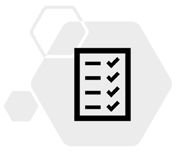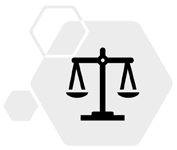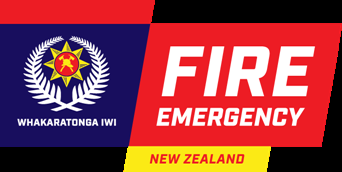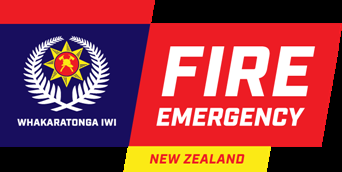

1982
Act
Information
Official
Hybrid working at the
Fire and Emergency
under
Released
Version 1.0
Whakaratonga Iwi – Serving Our People | fireandemergency.nz
October 2022
Why hybrid
1982
Hybrid working enables us to choose how we can best deliver on our outcomes. It means we choose the best places,
Act
times and approach to match, and deliver on the work we are doing.
We are all committed to delivering on our outcomes. As part of Fire and Emergency our focus is on the delivery of our
services to New Zealand. A planned and principles-based approach to hybrid working helps us to maintain and enhance
delivery to our organisation, other teams and stakeholders and continue to provide excellent service and outcomes.
Developing a shared understanding of hybrid working with your team wil set us al
Information up for success.
In order to achieve this, hybrid working must come from a position of give and take and requires responsibility from us
all. Hybrid working isn’t about you working all of your time from home and it may not be about you working all of your
time from the office either. We recognise the importance of kanoh
Official i ki te kanohi (face to face) connection and the value
of in-person collaboration to achieve our outcomes. the
We will also need to continue to adapt and be agile in our approach to hybrid working.
under
Released
Whakaratonga Iwi – Serving Our People | fireandemergency.nz
2
What is hybrid working at Fire and Emergency
1982
Hybrid working is available for our people, where the nature of their work
Hybrid working is also supported by
Act
allows it. It enables a blend of working from the office and working remotely
flexible workspaces. Flexible
(usually from home) depending on the needs of the organisation, your team,
workspaces move away from a
your role, and your own preference. It isn’t about you working all of your time
traditional office workspace where
from home and it may not be about you working all of your time from the
desks are allocated in a fixed
office either.
location to enabling you to choose a
Information
We are taking a principles-based approach to hybrid.
space that makes the most sense for
the work you are doing.
Principles help establish expectations and accountability about hybrid working
and should be used to enable effective and values-based conversa
Official tions
Spark Central NHQ is
between teams, leaders and individuals when discussing hybrid working.
designed to provide a
the
variety of different spaces
Hybrid working is an informal arrangement between you and your leader – the
and ways to work.
arrangement does not change the terms and conditions of your employment
agreement in respect of working hours or normal loc
under ation of work. There is a
responsibility on both sides to have discussion based on our hybrid working
principles. The decision about the arrangement is ultimately your leader’s and
may be subject to review depending on the organisation’s, or the team’s
needs.
Released
Whakaratonga Iwi – Serving Our People | fireandemergency.nz
3
Our hybrid principles
1982
Our hybrid principles have been developed to guide your discussions without the need for a list of rules as one size
Act
doesn’t fit all.
Our five principles are:
Fit with the role: Your hybrid working arrangement is a good fit for your role. Arrangements will vary across the
organisation depending on the needs of our different roles.
Information
Enables outcomes to be achieved: Hybrid working enables your team’s outcomes to be achieved and supports the needs
of other teams and your stakeholders.
Does not affect delivery: Delivery to the organisation is maintained or
Official enhanced. Hybrid working arrangements don’t
result in increased workloads for other team members.
the
Requires responsibility: Arrangements are based on trust. We trust you to choose the best times, places and approach
to match, and deliver on, the work you are doing.
under
Comes from a position of give and take: Hybrid working requires collective responsibility and for people to be open and
adaptable so that it works for everyone.
Released
Whakaratonga Iwi – Serving Our People | fireandemergency.nz
4
Kanohi ki te kanohi
1982
We recognise the importance of kanohi ki te kanohi (face to face) connection and the value of in-person collaboration to
Act
achieve our outcomes.
It’s important to think about our activities and tasks that are best done in-person. Types of work that are conducive to
face to face interactions can be broadly categorised as connection, collaboration, communication and learning.
Connection
Collaboration
Communicatio
Information n
Learning
Connection develops mutual
Col aboration is about people
Communication is about building
Most work-based learning is
understanding, reinforces
coming together to complete
trust, relationships and shared
informal and arises through
organisational norms and builds
work.
understanding.
‘learning by doing’. Informal
Official
a shared identity.
In-person connections are
Face to face communication
communication, which often
Once established, connections
important to innovation and
al ows for verbal and non-verbal
occurs face to face facilitates the
the
can be maintained remotely but
knowledge sharing, which often
cues that develop trust.
exchange of information.
remain strong and productive
occurs informal y or through
Our work is embedded in
People also learn skil s by being
through time spent together in-
opportunistic interactions.
interpersonal relationships,
with and observing their
under
person.
connections and interactions.
col eagues. Acquiring tacit
Tikanga requires that pōwhiri,
knowledge in this way can be lost
whakatau and poroporoaki are
when people are working
in-person wherever possible.
remotely.
Released
Whakaratonga Iwi – Serving Our People | fireandemergency.nz
5
Kanohi ki te kanohi – examples
1982
Connection
Collaboration
Communication
Learning
Act
Pōwhiri,
Poroporoaki,
Brainstorming
Workplan
Performance
Recruitment
Onboarding
Informal
whakatau,
farewells
or ideation
planning
Reviews
Interviews
learning with
Mostly
welcome
colleagues
face to face
Forming a
Establishing a
Establishing
Disciplinary
team e.g.
project
relationships
meetings
new project
team
Information
Celebrating
Discussions
Urgent or
Collaboration
One-to-one’s
Giving and
Formal
Coaching and
achievements
or chats with
unplanned
on tasks
receiving
learning
mentoring
colleagues
work
within teams
feedback
Some
Official
face to face
Major
Planning
Collaboration
New work
Maintaining
organisational
coordinated
across the
relationships
the
events
tasks
organisation
Routine tasks
Team
requiring
meetings or
under
Less
input from
daily stand-
others
ups
face to face
Released
Whakaratonga Iwi – Serving Our People | fireandemergency.nz
6
Safety, Health and Wel being
1982
Wherever we work, we need to be mindful of our safety, health and
Resources
Act
wellbeing and take action.
Hybrid Working
From correctly setting up your workstation in a suitable area and creating a
Wellbeing Portal Page
safe working environment to establishing routines and behaviours that
Conditions of working
support staying mentally healthy and promote positive wellbeing – make sure
from home
you take time to review the hybrid working safety, health and wellbeing
Information
resources.
Work from home self-
assessment checklist
Official
Workstation setup
checklist
the
under
Released
Whakaratonga Iwi – Serving Our People | fireandemergency.nz
7
Better meetings – beating virtual fatigue 1982
Be clear on the purpose and the intended outcome. Set an agenda.
Tips for hybrid meetings
Act
Think carefully about who needs to attend and what is expected of them –
• Ensure everyone has a consistent
make sure attendees are clear about their role.
experience – provide everyone
Help attendees to be prepared. If pre-work is required communicate this
with a chance to contribute.
early.
• Don’t default to people you can
Information
Confirm understanding and set deadlines for actions resulting from the
see or those in the meeting
meeting.
room.
Think about the length of the meeting. Could it be 45 minutes rath
Official er than an
• Encourage all remote
hour? Would 25 minutes rather than 30 minutes achieve the same outcome?
participants to have their camera
the
With that in mind, be sure to start on time and end on time.
on.
and chal enge yourself …
• Avoid using equipment in the
room that remote participants
under
Does it need to be a meeting? If yes …
won’t be able to see or use.
Is it suited to a hybrid environment or should it be kanohi ki te kanohi?
• Don’t continue the conversation
after remote participants have
left.
Released
Whakaratonga Iwi – Serving Our People | fireandemergency.nz
8
Further information
1982
Further information and resources on hybrid working can be found on the Portal
Act
https://portal.fireandemergency.nz/national-teams/people-hr/hybrid-working/
Information
Official
the
under
Released
Whakaratonga Iwi – Serving Our People | fireandemergency.nz
9


1982
Act
Information
Official
the
under
fireandemergency.nz
Released


1982
Act
Information
Official
Setting your team up
the
for hybrid success
under
Released
Version 1.0
Whakaratonga Iwi – Serving Our People | fireandemergency.nz
October 2022
Setting your team up for hybrid success 1982
1. Plan
Act
Information
Official
the
3. Check-in
2. Establish
and Review
under
Released
Whakaratonga Iwi – Serving Our People | fireandemergency.nz
2
Plan
1982
Fire and Emergency has adopted a principles-based
• Trust is central to success – Hybrid working
Act
approach to hybrid working. Principles help establish
challenges traditional notions of what
expectations and accountability about hybrid working and
productive work and workers look like. We trust
should be used to enable effective and values-based
our people to choose the best places, times and
conversations between teams, leaders and individuals
approach to match, and deliver on the work they
when discussing hybrid working.
are doing and to deliver on outcomes.
Information
Before engaging your team, take time to understand the
• Assume positive intent – We all come to work to
principles and review the guidance and resources provided.
do a good job, whether that’s in the office or
It’s also important to consider your own bias. For example,
from home. Help your team by making sure they
Official
if you prefer working in the office how might this influence
are clear about their outcomes and deliverables.
the
your approach to hybrid with your team? If you expect
• Intentional communication – Communication
people to be present are you able to articulate why?
within hybrid teams needs to be more
Conversely, if you’d rather spend more time working
intentional. Wherever people are working they
under
remotely do your team feel they have enough time with
need to receive the same information. Gaps in
you in person. Do you need to redress the balance?
communication create feelings of unease and
uncertainty. Effective communication is a shared
responsibility across the team.
Released
Whakaratonga Iwi – Serving Our People | fireandemergency.nz
3
Establish - Team
1982
It’s important to first spend time establishing a shared understanding about
Resources
Act
how your team will work effectively as a hybrid team. Well functioning teams
Setting your team up for
are key to hybrid success.
hybrid success –
Finding answers to a few key questions by engaging your team and asking for
developing a hybrid
feedback from people you work closely with outside your team will help you
working team charter
determine a clear picture of how to set your team up for hybrid success.
Information
Hybrid Working Team
Establishing a hybrid working team charter ensures everyone is on the same
Charter template
page.
What work needs to be
Official
We’ve developed a workshop you can run with your team to:
kanohi ki te kanohi (face
• Create a shared understanding of tasks and activities
the that are best done
to face) examples
together and the appropriate frequency of these face to face interactions.
Hybrid Working –
• Agreeing what you will include in your hybrid working team charter.
Principles-based
under
conversations
Released
Whakaratonga Iwi – Serving Our People | fireandemergency.nz
4
Establish - Individuals
1982
Once it’s been established how the team will be set up to work effectively,
Resources
Act
have a conversation with each member of your team to discuss their
individual hybrid working arrangement.
Hybrid Working –
Principles-based
Make sure you also talk through the Conditions of working from home
document and the Working from home self-assessment checklist.
conversations
Following your conversation, record the arrangement in an exchange of
Conditions of working
Information
emails including regular review periods to provide more certainty and clarity
from home
for both parties. This may be especially helpful if you leave your role or any
Working from home self-
issues arise with the hybrid working arrangement that need to be worked
assessment checklist
through.
Official
Note: Hybrid working is an informal arrangement between
the you and your
team member - the arrangement does not change the terms and conditions
of a person’s employment agreement in respect of working hours or normal
location of work. There is a responsibility on both sides to have discussion
under
based on our hybrid working principles. The decision about the arrangement
is ultimately yours (as the leader) and may be subject to review depending
on the organisation’s, or the team’s needs.
Released
Whakaratonga Iwi – Serving Our People | fireandemergency.nz
5
Check-in and Review
1982
Team
Act
Once your hybrid working team charter is agreed, check-in with your team to see how it’s going.
Make sure you schedule time with your team to review your team charter at the agreed date. It will also be valuable to
discuss the charter if a new team member joins, to ensure there is a continued shared understanding.
Individuals
Information
Discuss the hybrid working arrangement at the agreed review date to check it is still working as initially planned. Make
any updates to the arrangements as necessary and set a new review date.
Official
You can also include a check-in as part of your regular one-to-one meetings with your team member.
the
Remember … we will need to continue to adapt and be agile in our approach to hybrid working.
under
Released
Whakaratonga Iwi – Serving Our People | fireandemergency.nz
6
Further information
1982
Further information and resources on hybrid working can be found on the Portal
Act
https://portal.fireandemergency.nz/national-teams/people-hr/hybrid-working/
Information
Official
the
under
Released
Whakaratonga Iwi – Serving Our People | fireandemergency.nz
7


1982
Act
Information
Official
the
under
fireandemergency.nz
Released


1982
Act
Information
Official
Hybrid Working the
Setting your team up for hy
under brid success –
Principles-based conversations
Released
Version 1.0
Whakaratonga Iwi – Serving Our People | fireandemergency.nz
October 2022
Kia ora
1982
This guide focuses on hybrid working – hybrid working is available to our people where the nature of their roles allows
Act
it. It enables a blend of working from the office and working remotely (usually from home) depending on the needs of
the organisation, team, role and the individual’s preference. It isn’t about our people working all of their time from
home and it may not be about them working all of their time from the office either.
It’s important that we make informed and deliberate decisions around where our people work. With the recent changes
in the COVID-19 landscape, we can use this opportunity to set our teams up to wor
Information k in the most effective way and
embed productive and sustainable working practices.
Determining the best way to deliver organisational outcomes while balancing organisation, team, stakeholder and
individual needs can be daunting. This guide aims to help you plan
Official those conversations.
the
under
Released
Whakaratonga Iwi – Serving Our People | fireandemergency.nz
2
Setting your team up for hybrid success 1982
When we think about hybrid working it’s important to balance an individual’s
From our recent NHQ
Act
preference with the needs of the organisation and team:
Ways of Working Survey
• Is it best for the organisation?
(for the NHQ Relocation
Project) we learnt there is a strong
• Is it best for your team?
desire amongst most respondents
• Is it best for the individual’s role?
to work from home more than they
Information did before the pandemic, with 61
It’s important to note optimising an individual’s situation may be suboptimal
percent stating they’d like to work
for your team, other teams and the organisation.
from home more than they did pre-
Official
Finding the right balance
COVID-19. Forty eight percent of
survey respondents stated they’d
the
According to PricewaterhouseCoopers (PwC) research1, 68 percent of
prefer an equal split between
executives believe employees must work in the office at least three days a
working from home and the office.
week to retain company culture. But more than 55 percent of employees
under
prefer working remotely at least three days a week. There is a need to
balance the two viewpoints.
Released
Whakaratonga Iwi – Serving Our People | fireandemergency.nz
1
https://www.pwc.com/us/en/library/covid-19/us-remote-work-survey.html
3
Gaining clarity by engaging your team 1982
Finding answers to a few key questions by engaging your team and asking for feedback from people you work closely
Act
with outside your team will help you determine a clear picture of how to set your team up to work effectively.
Think about the fol owing and then engage your team in discussion:
• Many people have varied their working hours, i.e. their start and finish times whether working remotely or in the
office; what’s needed to ensure team connectedness, availability to stakeholders and customers to ensure a
Information
responsive service and coverage during leave etc.?
• What types of meetings are best held kanohi ki te kanohi (face to face) and which ones can be conducted virtually?
For example, for complex work or work that involves problem solving or speed, face to face is usually best.
Official
• What is the best way to hold team events, celebrate team successes or welcome new starters?
the
• How many days or in which situations is it optimal for your team to work together in the office to ensure connection,
inclusion, sharing of information and knowledge and working collaboratively?
under
There isn’t one right answer to these questions, it depends on the context of your team and the needs of the people
you work closely with outside your team, and the organisation. You can run the workshop ‘Setting up your team for
hybrid success – developing a hybrid working team charter’ with your team to discuss how you can best set yourselves
up to work as an effective hybrid team.
Released
Whakaratonga Iwi – Serving Our People | fireandemergency.nz
4


 Principles to support conversations and decisions
Principles to support conversations and decisions
1982
Each person’s situation is different. Simple, easily understandable principles help establish expectations and
Act
accountability about how hybrid working agreements will be applied. Consider our hybrid principles below.
Principle
Detail
Fit with the
Your hybrid working
•
How much of the role requires face to face interactions?
role
arrangement is a good fit for
Information
•
What would others see as the expectations of the location of the person in the role?
your role. Arrangements wil vary
across the organisation
depending on the needs of our
different roles.
Official
Enables
Hybrid working enables your
•
Are there outcomes that are affected by the role’s location?
outcomes to
team’s outcomes to be achieved
•
What impact does hybrid working have on the team outcomes? Other teams? Stakeholders? The organisation?
the
be achieved
and supports the needs of other
teams and your stakeholders.
•
Is there a team culture of col aboration, trust and achieving outcomes?
Does not
Delivery to the organisation is
•
Hybrid working, or flexibility in start and finish times, needs to work for the organisation, teams and individuals.
under
affect
maintained or enhanced. Hybrid
•
Be clear on delivery and quality expectations. Does the arrangement maintain or enhance service delivery?
delivery
working arrangements don’t
result in increased workloads for
•
Workloads should not be detrimental to individuals or teams i.e., shifting urgent work to individuals who can be
other team members.
seen in the office.
•
Consider the impact of workloads on people who are ‘seen’ in the office and be approached vs those who are
visibly online.
Released
Whakaratonga Iwi – Serving Our People | fireandemergency.nz
5

 Principles to support conversations and decisions
Principles to support conversations and decisions
1982
Each person’s situation is different. Simple, easily understandable principles help establish expectations and
Act
accountability about how hybrid working agreements will be applied. Consider our hybrid principles below.
Principle
Detail
Requires
Arrangements are based on
•
Individuals working flexibly need to be clear that they are responsible for maintaining delivery.
responsibility
trust. We trust you to choose the
Information
•
Taking responsibility has a trust element.
best times, places and approach
to match, and deliver on, the
•
Flexibility in location, or start and finish times, needs to work for the team and organisation as wel , so leaders
work you are doing.
and individuals must engage in a conversation around this.
Official
Comes from
Hybrid working requires
•
Decisions are not black or white and wil always have some shades of grey.
the
a position of
col ective responsibility and for
•
See hybrid working arrangements as col ective responsibility and to be open and adaptable so it works for
give and take
people to be open and adaptable
everyone.
so that it works for everyone.
under
We’ve created some example scenarios to help you prepare for different experiences and motivators of your team,
along with some starter recommendations for how you might manage individual conversations – these are detailed in
next pages.
Released
Whakaratonga Iwi – Serving Our People | fireandemergency.nz
6
Scenarios you may want to prepare for …1982
Here are some common scenarios that you might want to review and think about how you’d approach them.
Act
Scenario
Possible actions and conversation approaches
Ken works in a role that requires him to be in
Listen to their preferences and concerns
the office/or chooses to be in the office ful
time as he finds it easier to be productive. He is
• Discuss and agree how difference can be managed and stil result in delivering work.
unhappy that team members are working from
• Talk to him and his teammates about how they share the queries and work tha
Information t comes from interruptions amongst them vs Ken takingon
home more often. Because he is in the office
the accountability. Chat in meeting rooms to avoid interruptions when he is under pressure to deliver to a tight timeline. Remind him that
and others are not, he gets more interruptions
while he prefers to be in the office ful time, for others that doesn’t work as wel . Think of ways to communicate the different working
as people seem happier to engage with him as
arrangements with others.
he is ’right there’ vs his other teammate who is
working remotely. He sees this as unfair and
• Set up a way to review and track workload.
Official
worries that he wil end up doing a lot of extra
work.
the
Kiri could not wait to get back to the office. She
Listen to their preferences and concerns
loves interactions with people and feels more
energised being with others. Kiri has found the
• Discuss how workplaces have changed due to the pandemic. It wil not be the same again.
office is not as busy or energising as it once
• Acknowledge being around people is important to her and help her build people interactions into her day.
under
was, due to less people being around. She is a
bit deflated that what she loved about the
• Refer to your previous team engagement around what’s needed to ensure connection and inclusion, engagement with stakeholders etc.
working environment is not the same. She is
and encourage her there wil be more people returning to the office over time. Suggest she is patient and see how things evolve.
struggling and says she might as wel stay at
home, instead of sitting in the office with no
one around to talk to.
Released
Whakaratonga Iwi – Serving Our People | fireandemergency.nz
7
Scenarios you may want to prepare for …1982
Scenario
Possible actions and conversation approaches
Act
Dave wants to spend two to three days in the
Listen to their preferences and concerns
office with the flexibility to work outside the
office. He wil eb and flow with what his current
• Discuss positives and negatives and the impact of his approach on the team and on other teams, his customers and stakeholders.
priorities are. General y, he wants to confirm
• Come to an agreement that meets the five principles and ensures he meets the needs of the team as per your engagement discussion with
which days to come in at the start of each week
the team.
depending on what is in his calendar and what
meetings he needs to be present for.
Information
Sarah is not attracted to hybrid working and
Listen to their preferences and concerns
likes the structure and consistency of working in
the office. She did not enjoy being isolated at
• Outline the way the team wil operate as per the team engagement session and talk her through tools i.e., having a consistent calendar of
home and believes it’s important that the
who is in the office.
Official
whole team be in the office. “It is hard to work
• Explore why Sarah finds it more chal enging to coach online vs in person and coach to help her find ways to become more comfortable
in the team when you don’t know where
coaching online.
the
everyone is” she says. Sarah also coaches junior
members of the team and has made it clear
• Chat through how the world of work has changed, and work through what support she might need to adapt, how she might continue to
that supporting them remotely is not
enjoy the days when the team are in the office together, and how you wil check in with each other on how it’s going.
something she is happy doing long term.
under
Released
Whakaratonga Iwi – Serving Our People | fireandemergency.nz
8
Scenarios you may want to prepare for …1982
Scenario
Possible actions and conversation approaches
Act
Karena says she would like to continue her work
Listen to their preferences and concerns
from home as she has real y enjoyed remote
working. The home office means freedom to
• Be clear about why face to face is important in her role and discuss her response to this. Discuss what are the differences and impacts in
her where she can be more productive. She has
working from home compared to face to face. Agree what proportion of her time and level of day flexibility is required for face to face
established a great routine at home – less time
contact.
commuting, healthy eating, and weaving daily
• Outline organisation and team needs and how the decision around working from home or in the office can impact on the team and on
activities that help recharge and relax. She
Information
other teams.
accepts that on occasion she would come in but
would like most of her time working from
• Reiterate the importance of team connection, knowledge sharing, inclusion and building relationships - and link to the discussion with your
home. However, you know as her manager that
team around what’s needed.
much of the work she does would benefit from
• If there is stil resistance, you may need to remind them that this decision is at your discretion, and you need to balance organisation,
more face-to-face contact and it would be
stakeholder, team and individual needs – and that compromise may be needed. While you are keen to find a good outcome for everyone,
Official
beneficial to her being present in the office
there needs to be an alignment within the team.
more than she is suggesting now.
• Plan out an approach that could include a trial period, stepped return: build in review and learning over time.
the
under
Released
Whakaratonga Iwi – Serving Our People | fireandemergency.nz
9
Tips for one-to-one conversations
1982
Plan the conversation
Tips for remote conversations
Act
•
Before discussing individuals’ preferences, make sure you’ve thought about and discussed with your team members
•
Check the sound quality, that you can both hear each
about how the team needs to be set up to work effectively. Having a clear understanding of this (both yourself and your
other clearly.
team member) wil inform your discussion.
•
Try to speak as clearly as possible. You may need to
•
cover just one point at a time and take long pauses to
Confirm your team member is wil ing to have the conversation. Words that could be used: “I’m interested in your
give the person an opportunity to respond.
thoughts around your working location preference. Can we spend a few minutes talking about where you are at with this
and what criteria are important to you? Are you available at this time?”
•
If the conversation is taking place over the phone
there wil be a lack of visual cues. Be mindful of this to
•
Information
Minimise the likelihood of interruption and ensure appropriate privacy.
help prevent miscommunication.
•
Review the content provided in this guide.
•
Be aware of the person’s tone, particularly if this
changes during the cal . They may need to move to
Have the conversation
more private or comfortable space or need time to
consider their responses.
Official
•
Outline what the conversation is about and its intended outcome.
•
Be patient and try not to interrupt or jump to
•
Practice quality listening skil s e.g. reflective listening, open questions.
conclusions.
the
•
Approach the conversation with a neutral and open mind and be aware of your own assumptions or biases.
•
Once they’ve finished speaking ask questions to
•
Don’t feel pressured to agree to anything on the spot that you’re not comfortable with. You can respond that you’l take
confirm or clarify what they’ve said.
some time to consider the persons request.
under
Close the conversation
•
Confirm the person’s understanding of the arrangement and any next steps.
•
Thank them for their time.
Released
Whakaratonga Iwi – Serving Our People | fireandemergency.nz
10
Further information
1982
Further information and resources on hybrid working can be found on the Portal
Act
https://portal.fireandemergency.nz/national-teams/people-hr/hybrid-working/
Information
Official
the
under
Released
Whakaratonga Iwi – Serving Our People | fireandemergency.nz
11


1982
Act
Information
Official
the
under
fireandemergency.nz
Released
Kanohi ki te kanohi (face to face) – examples
1982
Connection
Collaboration
Communication
Learning
Act
Pōwhiri,
Poroporoaki,
Brainstorming
Workplan
Performance
Recruitment
Onboarding
Informal
whakatau,
farewells
or ideation
planning
Reviews
Interviews
learning with
Mostly
welcome
colleagues
face to face
Forming a
Establishing a
Establishing
Disciplinary
team e.g.
project
relationships
meetings
new project
team
Information
Celebrating
Discussions
Urgent or
Collaboration
One-to-one’s
Giving and
Formal
Coaching and
achievements
or chats with
unplanned
on tasks
receiving
learning
mentoring
colleagues
work
within teams
feedback
Some
Official
face to face
Major
Planning
Collaboration
New work
Maintaining
organisational
coordinated
across the
relationships
the
events
tasks
organisation
Routine tasks
Team
requiring
meetings or
under
Less
input from
daily stand-
others
ups
face to face
Released
Whakaratonga Iwi – Serving Our People | fireandemergency.nz
1
 Hybrid Working Team Charter
[Insert Team Name]
Hybrid Working Team Charter
[Insert Team Name]
This team charter helps to establish team norms for a successful hybrid working team.
We will use it to discuss, set and review the ground rules for how we will work effectively.
We will review it regularly particularly as new people join the team.
Date Details
1982
Date agreed
Next review date
[Agree how often the charter wil be reviewed – recommend you review
Act
every three months or when someone new joins the team]
Common Days and Hours Our anchor day(s)
[Agree which day(s) the team wil be in the office together]
Our team hours
[Agree what hours people can be contacted e.g. 9am-5pm]
Communication Platforms – what we use them for and how we use them Email
[List the types of communication you wil do by email]
Information
Phone/Teams cal
[List the types of communication you wil do by phone]
MS Teams chat
[List the types of communication you wil do by chat]
Text messages
[List the types of communication you wil do by text]
Official
MS Teams Meeting
[List the types of communication you wil do by MS Teams Meetings]
[Include agreed protocols e.g. be on time, or send apologies before the
meeting, keep cameras on]
the
Onsite – kanohi ki te
[List the types of communication you wil do face-to-face]
kanohi (face to face)
Effective
[Our agreements about how we wil communicate with each other e.g.
under
communication
actively listening when someone is speaking, being on time and prepared
for meetings]
Released
 Hybrid Working Team Charter
[Insert Team Name]
How we’l know if others in the team are available
Hybrid Working Team Charter
[Insert Team Name]
How we’l know if others in the team are available
Examples include:
•
Keep calendars up to date and open to others in the team to view (use private function for
any personal appointments)
1982
•
Use/Check MS Teams Status
Expectations of each other when working remotely (usual y from home)
Act
Examples include:
•
Agreed working from home days advised ahead of time, so everyone is aware of how to
contact each other
•
Use the confirmed communication channel should anything urgent arise when in the office
or working from home
•
A shared understanding that working from home should not create extra work for those in
the office
Information
We will come together in the following circumstances
Occasionally certain mahi or priorities may mean the team need to be in the office when they
would be working from home. Use this section to document these activities.
Official
Our Branch Teams’ anchor day(s) is/are:
Use this section to document the anchor days of the other teams in your branch
the
under
Released
link to page 34 link to page 35 link to page 36

Reference
Conditions of working from home
Introduction
When to use
You must comply with these conditions when you work from home as part of your
confirmed hybrid working arrangement or the
Apply to work from home
procedure.
1982
Contents
Work arrangements
Health and safety
Act
Review
Work arrangements
Work duties,
All arrangements about allocation of work duties, reporting and monitoring must
reporting and
be agreed with your manager. This may be a regular arrangement, when doing a
monitoring
particular task or project, or due to particular personal circumstances.
Information
Hours of work
Unless otherwise agreed with your manager, you must work your normal hours of
work.
Availability and
You must be contactable and available for communication with your manager
communication
during the agreed working hours.
Official
Team connections
Teams should strive to have at least one day a week when the whole team is in the
office to support managers in keeping teams connected where practicable.
the
Flexibility
Staff members must be flexible in instances where the organisation requires them
to be present in the office during days they normally work from home. Some
examples of this are, out-of-cycle team meetings and important workshops.
Sickness and injury You must contact your manager as soon as you realise you can’t work due to
under
sickness, injury, or the ill health of a family member.
Equipment
You must provide your own basic work space equipment. If you request additional
equipment for at-home use, you must provide approvals from both your manager
and ICT. Additional equipment costs are to come out of your
Business Unit’s budget.
Any equipment we provide is for work purposes only and will be maintained by us.
Released You must:
• take reasonable care of equipment
• keep equipment secure
• follow operating instructions for its use
• comply with the ICT acceptable use policy
• return equipment when the working from home arrangement ends.
10 October 2022
1
Reference - Conditions of working from home
Costs
You must pay any expenses incurred through working at home, unless otherwise
agreed with your manager. This includes the cost of electricity, internet access,
telephone lines and mobile phone usage.
Insurance and
Working from home may affect:
finances
• the provisions of your home or contents insurance
• your taxation, mortgage or rental arrangements.
We advise you to discuss the matter with your insurer and seek other professional
advice before you begin to work from home.
You must meet additional costs or liabilities incurred as a result of working from
1982
home.
Confidentiality,
Equipment and files must only be accessible by you and you must safeguard them
Act
security and access from access by other members of the household and any visitors.
There may be instances where we need access to your home-based worksite. In
these circumstances, we will give you as much notice as possible. These instances
may include:
• maintenance or repair of Fire and Emergency equipment and supplies
• assessing and monitoring security arrangements of equipment and documents
• occupational health and safety assessments.
Information
Liability
We’re not liable for any insurance liability, loss, damage, costs or expenses
incurred or suffered by you or any other person or organisation due, directly or
indirectly, to you working from home.
Health and safety
Official
Our obligations
We have a responsibility to protect the health and safety of our employees, as a
good employer and by law.
the
Your manager is responsible for providing safety and wellbeing information by:
• checking you have read and understood the conditions of this document
• taking you through th
e Work from home self-assessmentchecklist
under
• keeping in touch and regularly reviewing the work at home arrangement.
Released
10 October 2022
2
Reference - Conditions of working from home
Your obligations
You must:
• comply with
the Safety, health and wellbeing policy while working from home
• take reasonable care of your own health and safety and that of any third party
you come into contact with during the course of your employment
• set up your home-based worksite to ensure hazards are identified and controls
are put in place to manage them
• notify your manager of any work-related injury, illness or near miss that arises
from your work at home. This includes completing details in the Safe@Work
system.
We advise you not to:
1982
• disclose your home address, private email or telephone number to non-Fire
and Emergency personnel
•
Act
meet with clients or any other third parties at your home.
Review
Changes in
You must notify your manager of any change of circumstances that may impact on
circumstances
your working from home arrangement.
Review or
Your hybrid working or work from home arrangement may be reviewed, suspended
cancellation of the
or cancelled:
Information
arrangement
• at your request by giving reasonable notice to your manager
• by your manager by giving notice to you in writing
• on change of your residential address, unless the arrangement is renegotiated
• for any other organisational reason, such as a change of role, change in team
requirements or Fire and Emergency New Zealand direction.
Official
Your manager will review the hybrid working or working from home arrangement
with you on at least an annual basis.
the
Related information
How do I
under
Apply to work from home
Policies
Personnel record management
Safety, health and wellbeing
Guidelines
Released
Assess work from home request
Forms and tools
Request to work from home form
Work from home self-assessment checklist
10 October 2022
3
Reference - Conditions of working from home
Document information
Owner
DCE People
Last reviewed
10 October 2022
Review period
Every second year
Record of amendments
Date
Brief description of amendment
August 2015
New process implemented.
1 July 2017
This guideline was reviewed as part of the implementation of the Fire and Emergency
1982
New Zealand Act 2017. No substantive amendments were considered necessary before 1
July 2017.
29 April 2019
Added provisions that additional equipment for at-home use must be approved and costs
Act
to come out of the relevant Business Unit’s budget.
31 May 2019
Replaced AERIK with Safe@Work system.
13 August 2020
Added two clauses about team connection and flexibility.
20 December 2021
Reviewed as current.
6 October 2022
Added reference to hybrid working.
Information
Official
the
under
Released
10 October 2022
4

Checklist
Work from home self-assessment
When to use
Complete this checklist with your manager when you’re discussing your hybrid working
arrangement or applying to work from home.
Note: Seek input or advice from your Region Safety, Health and Wellbeing Advisor, if
required.
1982
Topic
Checklist item
Yes No
Act
Job design
I understand I should take a break or change my activity when working
intensively at a computer, e.g. at least a five-minute break every hour.
Working alone I’ve discussed and agreed with my manager how often I need to keep
in touch.
Note: We recommend you make contact at least once each day.
I understand that I shouldn’t:
• disclose my home address, private email or telephone number to
non-members of staff
Information
• meet with clients or any other third parties at home.
Workstation
Can you access the Fire and Emergency New Zealand network?
environment
Is the floor space free from tripping hazards, e.g. cables?
Is lighting adequate for the tasks being performed?
Official
Are noise levels acceptable?
the
Is the room temperature comfortable – heating and cooling as
needed?
Are there adequate power outlets to run the computer and other
equipment?
under
Is the computer and other electrical equipment protected by a circuit
breaker?
Do you have working smoke alarms in appropriate places in your
home?
Can you evacuate safely from the room in a fire or other emergency?
Workstation
Is the desk size suitable for the tasks being performed?
Released
size
Is the desk height between 680 mm and 720 mm from the floor?
Is there adequate leg space for free movement under the desk?
Work surface
If your work will involve using the telephone, is the telephone in an
layout
easy-to-reach position?
Are items used frequently in an easy-to-reach position, e.g. folders?
10 October 2022
1
CHECKLIST – Work from home self-assessment
Topic
Checklist item
Yes No
Chair
Is the chair adjustable in relation to the desk and computer screen?
Does the chair have adequate lumbar support?
Are your feet flat on the floor or footrest when seated?
Computer
Is the monitor one arm’s length away from you?
monitor
Is the top edge of the monitor at your eye level when seated?
Is the monitor free from glare and reflections, e.g. lights, windows?
1982
Can the contrast and colour of the monitor be easily adjusted?
Can the angle or position of the monitor be easily changed?
Act
Keyboard and
Is the keyboard comfortable and suitable for typing?
mouse
Is the mouse directly beside the keyboard on your preferred side?
Note: Use a mouse rather than the laptop touchpad.
Does the mouse glide easily across the mouse pad?
Insurance and
Have you notified your insurance company of the working from home
finances
arrangement?
Have you sought professional advice on how working from home may
Information
affect your taxation, mortgage or rental arrangements?
I confirm I’ve gone over this checklist and th
e Conditions of working from home with my manager.
Employee’s name
Signature
Date
Official
Manager’s name
Signature
Date
the
Note: Place the signed original of this checklist in the employee’s personnel file.
under
Released
10 October 2022
2
Document Outline




















